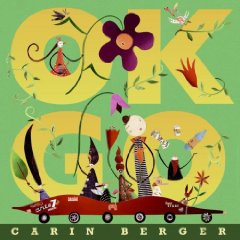 Carin Berger never deliberately set out to become an author/illustrator, but she found her true calling in picture books. She was awarded the Society of Illustrators Founder’s Award in 2006, the NY Times named The Little Yellow Leaf one of the top ten picture books of 2008, and Publishers Weekly called her “one to watch.”
Carin Berger never deliberately set out to become an author/illustrator, but she found her true calling in picture books. She was awarded the Society of Illustrators Founder’s Award in 2006, the NY Times named The Little Yellow Leaf one of the top ten picture books of 2008, and Publishers Weekly called her “one to watch.”
And now’s a great time to watch.
Her latest title OK Go, a playful book about making greener choices, releases in bookstores today.
I had the opportunity to talk with Carin about her journey to publication (somewhat serendipitous) and her plans for the future (deliberately delightful). I shall follow PW’s lead and not only watch her, but predict the Caldecott will soon be calling.
Carin, how did you start on the path to becoming a children’s book illustrator?
I’ve always loved reading, writing, old paper stuff, children’s books, type and making things. I studied graphic design and spent almost 20 years working in the field. I worked my way down the (pay) food chain towards what I really loved: from very high-end annual reports and brochures to eventually designing book jackets for all the major publishers. I did jackets for poetry, fiction and non-fiction. I still do this and love it. I get to read manuscripts and can often use my own illustration or photography.
Anyhow, I had a daughter, and it turned out she was a sleepless wonder. (When she was little. Now she sleeps like a baby!) I spent much of most evenings hanging with her, waiting for her to fall asleep. I wrote the poems for Not So True Stories and Unreasonable Rhymes in those long hours, mostly to amuse myself.
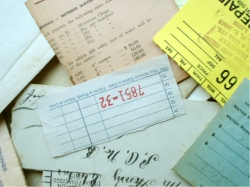 How did you first get involved in collage?
How did you first get involved in collage?
As for collage, that was kind of serendipity. I thought I would do paintings and was experimenting with different painting styles, some which included collage, and then my friend gave me a magic box full of old letters and documents and ephemera that she picked up at a flea market, knowing I had a thing for that kind of stuff. And that was the beginning.
Once I had pulled together some sample illustrations and manuscript, a friend-of-a-friend agreed to rep it; and she, amazingly, ushered it into the world.
And was Not So True Stories and Unreasonable Rhymes your first manuscript?
Yes, it was my first manuscript, though I’d written a bit, for myself, before.
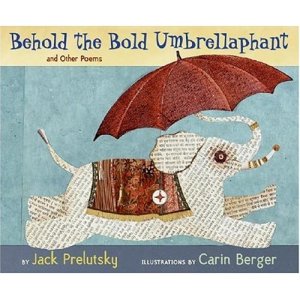 Wow. That’s a rare accomplishment and speaks volumes about your talent. Where did you go from that first success?
Wow. That’s a rare accomplishment and speaks volumes about your talent. Where did you go from that first success?
Not So True Stories was a quirky little book that got good reviews but sold…well, like a quirky little book. Chronicle Books graciously published my second book, All Mixed Up, another quirky and very little book. (It can fit in your pocket.)
I was then called by Greenwillow Books and asked to illustrate Jack Prelutsky’s book. A real honor. And, because it was the amazing Master Jack’s book, it received lots of nice attention. He was named the first ever Children’s Poet Laureate right when the book came out which meant that there was a shiny golden sticker that went on the front of the book, too. I’ve been working with Greenwillow Books for the last couple of projects.
How has your illustration style evolved from one book to the next?
As for the collage style, it has sort of evolved in a few directions.
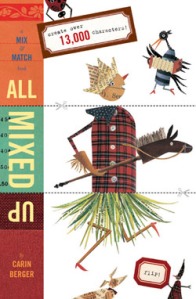 All Mixed Up, a mix and match book where the heads, middles and legs (as well as the alliterative poems) combine in various ways to make new characters, was born out of the idea of collaging the collaged illustration. I had originally conceived it as a game, but Chronicle preferred to do it as a book. The illustrations are similar, yet somewhat simpler than Not so True Stories, so that the mixing worked.
All Mixed Up, a mix and match book where the heads, middles and legs (as well as the alliterative poems) combine in various ways to make new characters, was born out of the idea of collaging the collaged illustration. I had originally conceived it as a game, but Chronicle preferred to do it as a book. The illustrations are similar, yet somewhat simpler than Not so True Stories, so that the mixing worked.
For Behold the Bold Umbrellaphant, I wanted to do a slightly different style than the books that I had authored, and also, because the poems are about a conglomeration of animals and objects (such as Ballpoint Penguins), I thought it would be fun to play that up and make it really obvious.
I collect old dictionaries and army/navy catalogues that have engraved images, and so I used those images and integrated them into the collage. To do this I actually scanned engravings from the book, played with them in Photoshop, printed out pieces and used them to cut and paste with.
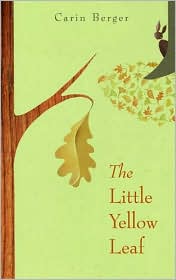 The Little Yellow Leaf felt like a really simple, nostalgic story and I ended up introducing a bit of paint (stenciling) to the collage to add another layer and also, at times, to age the paper.
The Little Yellow Leaf felt like a really simple, nostalgic story and I ended up introducing a bit of paint (stenciling) to the collage to add another layer and also, at times, to age the paper.
Ok Go has a zillion funny little characters carousing throughout the book and feels much more like the art in the end papers of Not so True Stories and also in All Mixed Up. It was fun to change things up a bit and to do such playful art.
My next book, due out late next winter, is called Forever Friends and the art is much more similar to the art in The Little Yellow Leaf. I see it as a companion book to The Little Yellow Leaf because the bunny on the front cover and the bird on the back cover of Leaf are the characters in Forever Friends.
Your newest picture book OK Go is a playful book for the wee set, all about making greener choices. How did the concept for this book come together?
As best I can recall, it all sort of came as a whole piece. I liked the idea of introducing taking care of the environment to really young kids. I remember growing up in the 70s when “Give a Hoot, Don’t Pollute” was around and feeling very empowered to help make the world a better place. Here are some early sketches:
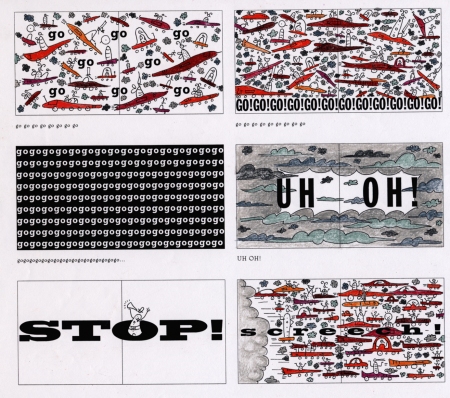
One of the biggest things I needed to figure out was how to emphasize the message in a powerful yet playful way. The gatefold came about because I wanted it to feel like a huge gathering or movement.
How do you choose which paper to cut for certain images? Does the paper speak to you?
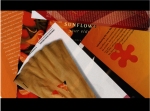 I have files of papers sorted by color—yellows/oranges, reds/pinks, blues/purples—and I also have files for some of my passions: polka dots, plaids, wood grain, buttons…
I have files of papers sorted by color—yellows/oranges, reds/pinks, blues/purples—and I also have files for some of my passions: polka dots, plaids, wood grain, buttons…
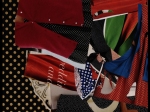 I actually cut a vellum stencil of the shape I need and hold it over the paper to find a good section. Something with good gradations for example, that help the piece, say a car, look more dimensional. Clothing catalogs are great for plaids and buttons. And then I use a variety of old stuff, both really old ephemera like letters and receipts with great calligraphy on them and also bits and pieces that I find around: ticket stubs, laundry tags, etc.
I actually cut a vellum stencil of the shape I need and hold it over the paper to find a good section. Something with good gradations for example, that help the piece, say a car, look more dimensional. Clothing catalogs are great for plaids and buttons. And then I use a variety of old stuff, both really old ephemera like letters and receipts with great calligraphy on them and also bits and pieces that I find around: ticket stubs, laundry tags, etc.
Do the words on the paper hold any significance?
I do think about the paper I use, where it comes from and what it says. Not in a huge way, but in a quiet, just-to-amuse-myself sort of way. And in almost every book I make sure to include, somewhere, my daughter’s name, Thea. In The Little Yellow Leaf it appears on the page with the giant sun, and in OK Go I use her name and the names and initials of lots of friends to decorate the cars.
Speaking of the glorious sun in The Little Yellow Leaf, do you have any idea how many pieces of paper you used? Or how long it took to create that page?
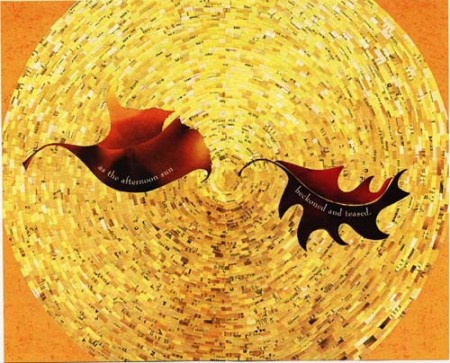
I always knew what I wanted to do with that illustration, but it took a little longer (well, w-a-y longer) than I thought it would. I spent probably close to a week on it. Actually, part of the reason it took so long is that I started from the outside and was working my way towards the center and I got pretty far before I realized that, because the sun is asymmetrical, it wasn’t going to work. I had to add another layer working from the center out. Ugh!
I have absolutely no idea how many pieces there are, and I can’t imagine anyone who would be nuts enough to count (though I’d be curious to know that)!
Circling back to your newest book, what kind of impact do you hope OK Go will have on green thinking among parents and young children?
There are some very simple things that kids can do to be more green and they are listed in the back of the book.
I think if you plant the idea early, children will live more careful, aware lives, and remind their parents to do so as well. Plus, what is more motivating than our kids to get us to take care of this planet and the environment?
But mostly I want kids to have fun with the book, and to be introduced these ideas in a playful, engaging way.
One last thought: all of my art is made with found and recycled materials, so maybe this will prove inspiring and enabling, too.
Indeed it is, Carin! So let’s use that inspiration for a contest!
Kids age 10 and under, create a collage with a green theme–reduce, reuse, recycle or whatever you can dream up! Email your illustration to tarawrites at yahoo (you know the rest, dot com) and include child’s first name and age.
With the help of Random.org, we’ll randomly select three winners.
The grand prize winner gets an autographed copy of OK Go. The second and third winners will receive an All Mixed Up promotional mini-book. And all three illustrations will be featured on Carin Berger’s website and/or blog.
In your email, be sure to grant your permission for sharing the illustration and the child’s first name/age online.
One illustration per child. Enter now through midnight E.S.T., Tuesday, May 12.
Carin, thank you for giving us a glimpse into your beautiful world! I bet everyone is going to GO! GO! GO! get your book today!
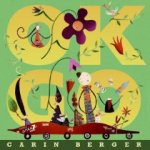
Take a peek inside OK Go or
Find OK Go at your local bookstore!
OK Go by Carin Berger
April 2009
Greenwillow Books






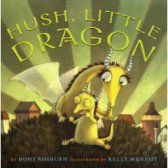



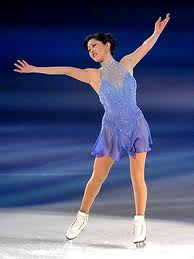 Before Michelle Kwan, before the whole Tonya Harding-Nancy Kerrigan scandal, there was a figure skater who exhibited that perfect balance of power and grace: Kristi Yamaguchi. She had the high jumps and fast spins, but she also had a style and effortless elegance no one else could match.
Before Michelle Kwan, before the whole Tonya Harding-Nancy Kerrigan scandal, there was a figure skater who exhibited that perfect balance of power and grace: Kristi Yamaguchi. She had the high jumps and fast spins, but she also had a style and effortless elegance no one else could match.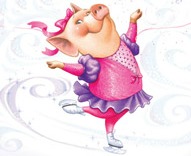 First, let me introduce the main character, Poppy. Isn’t she cute? In her first book, she had the courage to DREAM BIG and chase after her goals.
First, let me introduce the main character, Poppy. Isn’t she cute? In her first book, she had the courage to DREAM BIG and chase after her goals.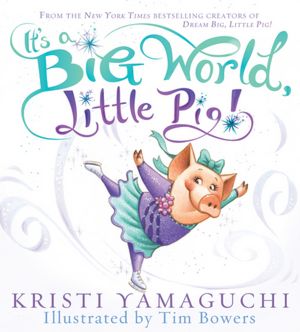 According to John Sellers, children’s reviews editor for Publishers Weekly, “There’s certainly a need for books that portray, mirror and show the value in all kinds of families: same-sex families, mixed-race families, stepfamilies, families with grandparents as guardians.” I also believe that books should reflect the diversity in the world around children. In my own neighborhood, there are families from Brazil, India, the Czech Republic, Spain, Portugal, China, Taiwan, Denmark, and Mexico. So I was pleased to see that Yamaguchi’s book introduces readers to animal competitors from all over the world.
According to John Sellers, children’s reviews editor for Publishers Weekly, “There’s certainly a need for books that portray, mirror and show the value in all kinds of families: same-sex families, mixed-race families, stepfamilies, families with grandparents as guardians.” I also believe that books should reflect the diversity in the world around children. In my own neighborhood, there are families from Brazil, India, the Czech Republic, Spain, Portugal, China, Taiwan, Denmark, and Mexico. So I was pleased to see that Yamaguchi’s book introduces readers to animal competitors from all over the world.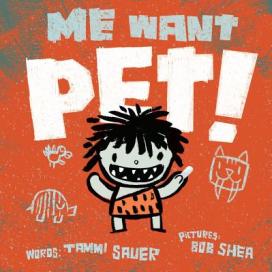 Ooga!
Ooga!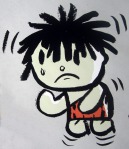 Cave Boy sad. Me sad. You sad!
Cave Boy sad. Me sad. You sad!





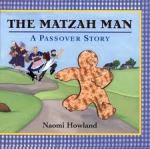 Another playful book for Passover is
Another playful book for Passover is 

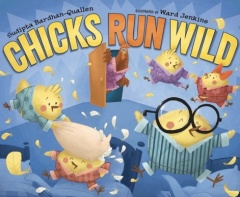
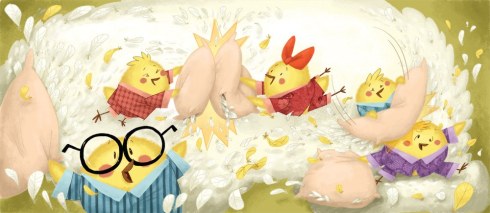

 Want it? Sure you do!
Want it? Sure you do!
 “Some things just come to me in dreams,” Dylan told Hilburn. “But I can write a bunch of stuff down after you leave…about say, the way you are dressed. I look at people as ideas. I don’t look at them as people. I’m talking about general observation. Whoever I see, I look at them as an idea…what this person represents. That’s the way I see life. I see life as a utilitarian thing. Then you strip things away until you get to the core of what’s important.”
“Some things just come to me in dreams,” Dylan told Hilburn. “But I can write a bunch of stuff down after you leave…about say, the way you are dressed. I look at people as ideas. I don’t look at them as people. I’m talking about general observation. Whoever I see, I look at them as an idea…what this person represents. That’s the way I see life. I see life as a utilitarian thing. Then you strip things away until you get to the core of what’s important.”



 As an aspiring author, I’ve been told countless times about the importance of a first line. Never before has a picture book opening reined me in so tightly, so swiftly as
As an aspiring author, I’ve been told countless times about the importance of a first line. Never before has a picture book opening reined me in so tightly, so swiftly as  The Art-Deco-inspired illustrations by Miles Hyman render bold forms with a soft pastel stroke, a visual juxtaposition befitting this tale of a strong yet sensitive racehorse. The book is gorgeous in all respects—from the language, to the theme, to the green hills of the final spread.
The Art-Deco-inspired illustrations by Miles Hyman render bold forms with a soft pastel stroke, a visual juxtaposition befitting this tale of a strong yet sensitive racehorse. The book is gorgeous in all respects—from the language, to the theme, to the green hills of the final spread.



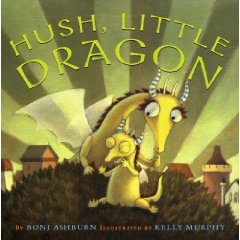 Hush little baby, don’t say a word.
Hush little baby, don’t say a word.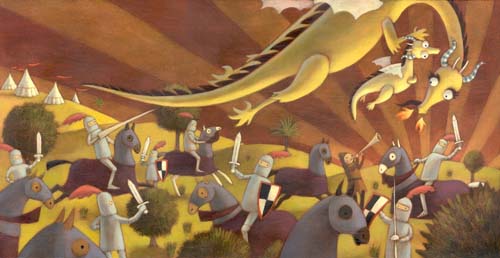
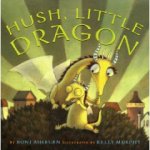 Hush, Little Dragon
Hush, Little Dragon
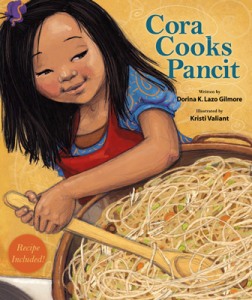 What makes you pluck a picture book off the shelf? A clever title? The author’s name? What about a charming little girl on the cover, stirring a delicious pot of noodles? That’s what got to me with Cora Cooks Pancit by Dorina K. Lazo Gilmore.
What makes you pluck a picture book off the shelf? A clever title? The author’s name? What about a charming little girl on the cover, stirring a delicious pot of noodles? That’s what got to me with Cora Cooks Pancit by Dorina K. Lazo Gilmore.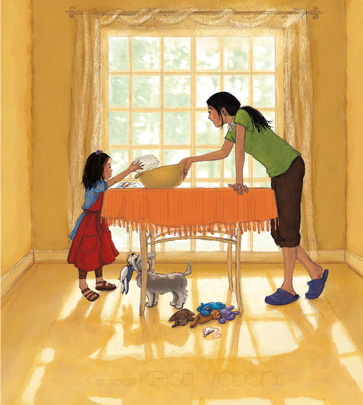
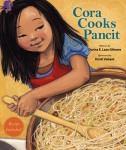 Cora Cooks Pancit
Cora Cooks Pancit
 Remember those embarrassing dance moves your Aunt Myrna unveiled at Cousin Frannie’s wedding? She flapped her arms, wiggled her tush and tumbled onto the parquet floor?
Remember those embarrassing dance moves your Aunt Myrna unveiled at Cousin Frannie’s wedding? She flapped her arms, wiggled her tush and tumbled onto the parquet floor? The jokes even extend beyond the story, with end pages that provide step-by-step “Disco Chicken” and “Chattanooga Choo Choo” dance moves. Funky album covers replace the typical staid author and illustrator photos.
The jokes even extend beyond the story, with end pages that provide step-by-step “Disco Chicken” and “Chattanooga Choo Choo” dance moves. Funky album covers replace the typical staid author and illustrator photos.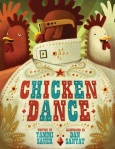 Chicken Dance
Chicken Dance
 Benjamin wanders too far from home one day and stumbles into Dragon Wood. In this tale of boy meets dragon, the unexpected happens–dragon meets boy.
Benjamin wanders too far from home one day and stumbles into Dragon Wood. In this tale of boy meets dragon, the unexpected happens–dragon meets boy. Guess What I Found in Dragon Wood
Guess What I Found in Dragon Wood

 Write from the heart. Find your voice. Keep writing no matter what anyone else says.
Write from the heart. Find your voice. Keep writing no matter what anyone else says. Lester Fizz, Bubble-gum Artist
Lester Fizz, Bubble-gum Artist
 If you love children’s books, please participate in a new weekly blog meme:
If you love children’s books, please participate in a new weekly blog meme:

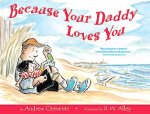

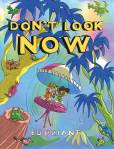

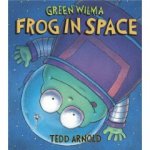
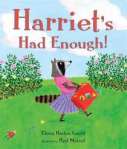




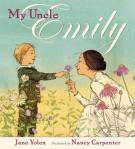




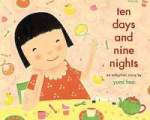





 All Mixed Up, a mix and match book where the heads, middles and legs (as well as the alliterative poems) combine in various ways to make new characters, was born out of the idea of collaging the collaged illustration. I had originally conceived it as a game, but Chronicle preferred to do it as a book. The illustrations are similar, yet somewhat simpler than Not so True Stories, so that the mixing worked.
All Mixed Up, a mix and match book where the heads, middles and legs (as well as the alliterative poems) combine in various ways to make new characters, was born out of the idea of collaging the collaged illustration. I had originally conceived it as a game, but Chronicle preferred to do it as a book. The illustrations are similar, yet somewhat simpler than Not so True Stories, so that the mixing worked. The Little Yellow Leaf felt like a really simple, nostalgic story and I ended up introducing a bit of paint (stenciling) to the collage to add another layer and also, at times, to age the paper.
The Little Yellow Leaf felt like a really simple, nostalgic story and I ended up introducing a bit of paint (stenciling) to the collage to add another layer and also, at times, to age the paper.
 I have files of papers sorted by color—yellows/oranges, reds/pinks, blues/purples—and I also have files for some of my passions: polka dots, plaids, wood grain, buttons…
I have files of papers sorted by color—yellows/oranges, reds/pinks, blues/purples—and I also have files for some of my passions: polka dots, plaids, wood grain, buttons… I actually cut a vellum stencil of the shape I need and hold it over the paper to find a good section. Something with good gradations for example, that help the piece, say a car, look more dimensional. Clothing catalogs are great for plaids and buttons. And then I use a variety of old stuff, both really old ephemera like letters and receipts with great calligraphy on them and also bits and pieces that I find around: ticket stubs, laundry tags, etc.
I actually cut a vellum stencil of the shape I need and hold it over the paper to find a good section. Something with good gradations for example, that help the piece, say a car, look more dimensional. Clothing catalogs are great for plaids and buttons. And then I use a variety of old stuff, both really old ephemera like letters and receipts with great calligraphy on them and also bits and pieces that I find around: ticket stubs, laundry tags, etc.


 I had the pleasure of meeting author
I had the pleasure of meeting author  My big surprise was—I didn’t really have any big suprises! The tremendous benefit of using the SCBWI and Verla Kay discussion boards is using the experiences of other authors to make the path easier. I am hugely indebted to those who have traveled this literary path before me! Through the discussion boards and workshops, I felt really well-prepared. Any of my questions were answered: simple questions such as “How do I make postcards?” to more complicated questions dealing with contracts. One pleasant surprise was that all of my school visits were wonderful. Each one was gracious, organized, prepared AND I sold a lot of books! Again, I learned how to prepare pre-order forms, write school contracts and even develop a PowerPoint presentation through the experiences of others. There is much to be learned, but a wealth of information is readily available.
My big surprise was—I didn’t really have any big suprises! The tremendous benefit of using the SCBWI and Verla Kay discussion boards is using the experiences of other authors to make the path easier. I am hugely indebted to those who have traveled this literary path before me! Through the discussion boards and workshops, I felt really well-prepared. Any of my questions were answered: simple questions such as “How do I make postcards?” to more complicated questions dealing with contracts. One pleasant surprise was that all of my school visits were wonderful. Each one was gracious, organized, prepared AND I sold a lot of books! Again, I learned how to prepare pre-order forms, write school contracts and even develop a PowerPoint presentation through the experiences of others. There is much to be learned, but a wealth of information is readily available. Tonight You Are My Baby
Tonight You Are My Baby
I love anything by Lisa Wheeler. She does rhyme in a way that consistently surprises and delights.
And my fave from my childhood is “The Giant Jam Sandwich” by John Burroway Lord.
Tara, thanks for sharing this. I’ve heard the “don’t rhyme” mantra – but here’s the irony: I’m developing some literacy activities for pre-schoolers (and their parents) and all the teachers I’ve talked with have said “use rhyming books.” Why? Because the predictability of a rhyme helps kids succeed in guessing what’s next, in learning sounds, in identifying those sounds with print. so… keep on rhyming!
You’re absolutely right–rhyme is great for teaching literacy and story skills.
Repetitive refrains (in prose and poetry) can also help children identify words and what comes next in the story.
All told, picture books are awesome teaching tools!
I really like THE WRIGGLY, WRIGGLY BABY by Jessica Clerk and SNOWMEN AT NIGHT by Caralyn Buehner. Also, keep an eye out, my picture book, DON’T LET THE BEDBUGS BITE! is a rhymer and comes out this fall.
My kids love JAKE GOES PEANUTS by Michael Wright (his other JAKE books are great, too). I’ve heard most of the reasons not to rhyme, but the last one was new to me. Makes a lot of sense that rhymes would be difficult to translate into other languages. Interesting. Thanks for the post!
I enjoy Boni Ashburn’s books. I had the opportunity to hear her speak and teach at the SCBWI-MI Fall Mackinac Island 2011 Conference. She is so much fun!
michellebradford.blogspot.com
michellebradford.wordpress.com
Twitter: WriteFriend
I’d heard about the difficulties with rhyming PBs too. I still went and wrote Mrs MacCready Was Ever So Greedy in rhyme – maybe it’s because I’m really a musician by trade.
I also used to teach and I know how much young children (and older ones if they’d admit it!) love to join in with the rhythm and rhyme of such stories.They are an invaluable tool in helping children to learn sounds and recognise them in print.
My favourite rhyming books? Would have to plump for Julia Donaldson – Room on the Broom or Tyrannosaurus Drip are brilliant examples of PBs that tell the story first and foremost and just happen to rhyme too. Doesn’t she make it look easy!!
My publishers have now requested a series of Ever So books – all in the same rhyme scheme – and trying to put the story first is causing me GREAT difficulty, but it is good fun too, playing around with words. There was much relief all round at home (particularly from husband) when I finally finished Tabitha Posy Was Ever So Nosy. A little bit of rest now before the next one is tackled!
Tara, thank you for this excellent and very interesting post.
I am still needing to find a ‘home’ for my rhyming story, but .. maybe one day.
Children love rhyme, especially when they can guess the word that is coming, and at times when it is unexpected they like the surprise of it and keep it in mind. Or so I’ve found ..
I just wrote my first rhyming picture book – completely unintentionally. I sat down to write prose and it all came out in rhyme. I don’t think one should fight that. However, I am lapping up posts like these, in an attempt to avoid some of the worse rhyming pitfalls! Thanks, Tara!
What a great post! Very informative. I never thought of the language translation consideration so thanks for that. Sheep in a Jeep was always the fave at our house!
Anything by Julia Donaldson (i.e. The Gruffalo)
And, of course, Dr Seuss!